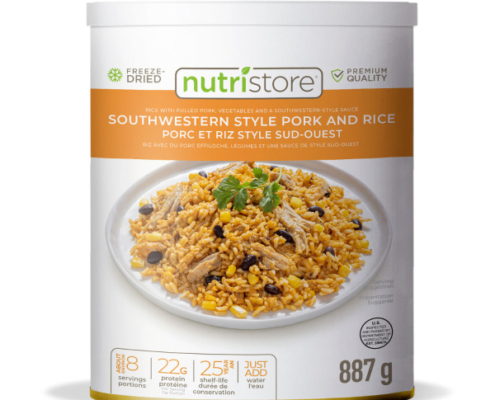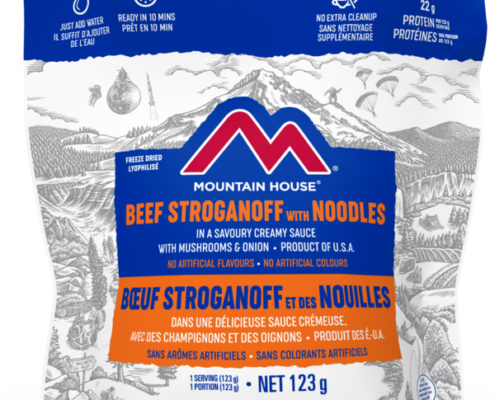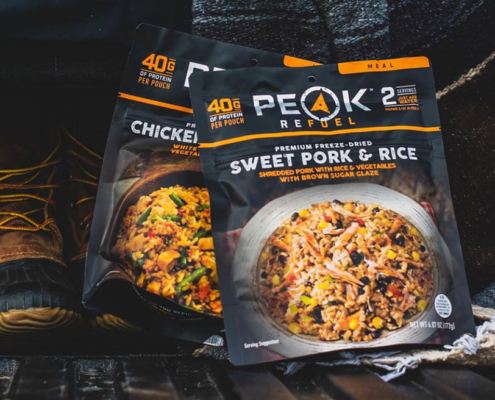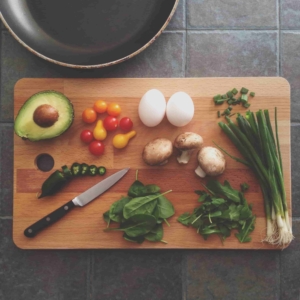Emergency Food Hacks: Improv Cooking in Crisis
In times of emergencies, such as natural disasters or unforeseen crises, the availability of conventional cooking supplies may be limited. However, with a bit of resourcefulness and creativity, it’s possible to create nourishing meals using minimal ingredients and tools. This article explores various emergency food hacks to help you make the most of what you have during challenging situations.
Maximizing Shelf-Stable Staples:
- Utilize long-lasting staples such as freeze dried fruits and vegetables, rice, pasta, and dried legumes as the foundation of your meals. Briden Solutions has numerous options – check it out!
- Create hearty stews or one-pot dishes by combining beans, vegetables, and grains.
- Try pre-made meals – whether in a pouch (5 year shelf life), or in a can (up to 30 years unopened).
Improvise with Non-Perishables:
- Get creative with non-perishable items like canned or freeze dried meat, fish, or vegetables. Make a list of recipes or meals that you can make with what is in your non-perishable stock.
- For example: transform canned tuna or salmon into a makeshift meal with pantry items like pickles, and mayonnaise.
- One-pan wonders: cook an entire meal, such as chili in a single pan to simplify cleanup on top of it
Make the Most of Condiments:
- Condiments can add flavor and variety to simple dishes. Keep the basics (ketchup, mustard, mayo for example) in your storage.
- Combine soy sauce, vinegar, and sugar for a makeshift stir-fry sauce or use ketchup and spices to create a flavorful marinade for proteins.
DIY Baking:
- No oven? No problem!
-
- Use a thick-bottomed pan to simulate baking right on your stovetop. Place a wire rack or trivet inside the pan, and put your baking dish on top. Cover the pan with a lid to trap heat.
-
- No rolling pin? No problem!
-
- Use a clean, smooth bottle or a tall glass to roll out dough.
-
- No baking powder? No problem!
-
- Mix 1/4 teaspoon of baking soda with 1/2 teaspoon of cream of tartar as a substitute for baking powder.
-
- No eggs? No problem!
-
- Applesauce or Mashed Banana: Substitute 1/4 cup of unsweetened applesauce or mashed banana for one egg in recipes.
- Yogurt or Buttermilk: Use 1/4 cup of yogurt or buttermilk for each egg.
-
- No buttermilk? No problem!
-
- Add 1 tablespoon of vinegar or lemon juice to a cup of milk as a substitute for buttermilk.
-
- No vanilla? No problem!
-
- Use maple syrup, almond extract, or even a bit of coffee as a substitute for vanilla extract.
-
Here’s a few more baking hacks, just for fun!
- Cold butter? No problem!
-
- Grate cold butter using a cheese grater to quickly bring it to room temperature.
-
- Brown sugar hard? No problem!
-
- Microwave hardened brown sugar with a damp paper towel for a few seconds to soften it.
-
- Separate your eggs with ease!
-
- Crack eggs into a slotted spoon, allowing the egg whites to separate through the slots while retaining the yolk.
-
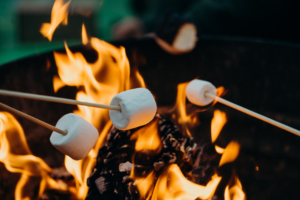
Outdoor Cooking Techniques:
- Explore outdoor cooking methods, such as grilling or using a portable camping stove, to prepare meals when indoor resources are limited.
- Many people love BBQ, if this is you, be sure to have spare fuel handy!
- Campfire cooking options:
-
- Cooking with a stick
- Dutch oven
- Foil wrapped food
- Tripod
- Burying food in the coals
- Grilling
-
Foraging for Flavor:
- If safe and possible, explore foraging for edible wild plants or fruits to supplement your meals.
- Learn about local edible plants in your area beforehand to ensure safety and avoid toxic plants.
-
- Field guides & local experts can help you educate yourself further in safety while foraging.
-

Kitchen Tools:
- On the go: stock a mess kit to supply all of the items necessary for you to cook comfortably on the go. The running joke in preparedness world is “don’t forget your can opener”!
- These tools can enhance your ability to prepare a variety of meals with limited resources. Think about what it is you use the most and what you would want and need in an emergency.
-
-
- Chef’s Knife: A high-quality chef’s knife is indispensable for chopping, slicing, and dicing. It’s the workhorse of the kitchen.
-
What type of kitchen knife should I have?:
I spoke with Cory, from our “Cooking With Cory” videos, and he told me that you do not have to spend a fortune on a knife, as long as its sharp, and fits your hand/grip. He also explained to me that a serrated knife vs a straight edge have different purposes.
For example: I watched him chop onions, and asked him if he cries every time. He explained to me that keeping the onions in the fridge (think the concept of viscosity), and using a sharp, straight edge knife minimizes the release of whatever enzyme is within the onion.
-
-
- Cutting Board: A durable cutting board provides a safe and stable surface for food preparation. Look for one that is easy to clean and won’t damage your knives.
- Spoon and Spatula Set: Spoons and spatulas for stirring, flipping, and serving.
- Saucepan(s) with Lid: Essential for boiling, simmering, and preparing sauces. Look for a durable and heat-conductive material.
- Mixing Bowls: Durable mixing bowls in various sizes are essential for combining and preparing ingredients. Choose bowls made of stainless steel, glass, or durable plastic.
- Meat Thermometer: Ensure accurate cooking temperatures, especially for meat, with a meat thermometer. It’s crucial for food safety and achieving the desired level of doneness.
- Oven Mitts: Protect your hands from burns when handling hot pots, pans, and baking sheets.
-
Community Cooking:
- Pool resources and collaborate with neighbors or community members to share ingredients and cooking tools.
-
- When I see this type of suggestion, to me this suggests that we need to have positive relationships with our neighbors and community, so that if “push comes to shove”, we can help one another out during a challenging time.
-
- Community kitchens can help everyone make the most of the available resources and ensure that everyone is well-fed during challenging times.
Conclusion:
In times of crisis, resourceful cooking becomes a valuable skill. By incorporating these emergency food hacks, you can turn limited ingredients and tools into satisfying meals that provide comfort and nourishment during difficult situations. Stay resilient, stay prepared, and keep your creativity alive in the kitchen even when faced with unexpected challenges.





